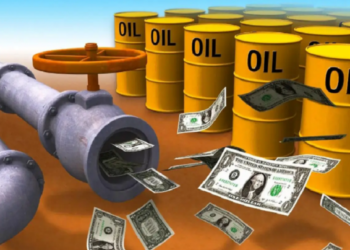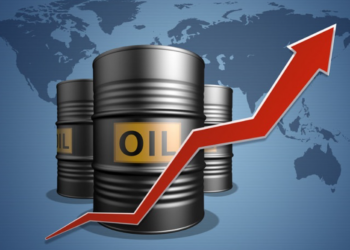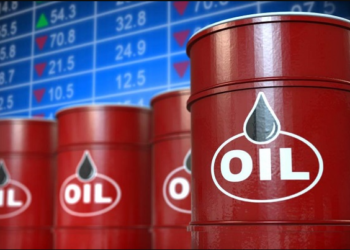So the worst is fairly over with shale oil. Now we know what impact it could have because we’ve seen most of it already. Nigeria has lost the US as its main crude oil customer and is struggling to sell its crude. Oil prices have come down over 40% and the whole world is divided into winners and losers from the crash. However, the lack of preparation for this event was the major reason for the level of impact it had on Nigeria. Like the bulk of OPEC, no one expected shale oil to be as much a threat as it became. Thus, with the benefit of this experience, Nigeria needs to prepare for the future as there are several energy trends evolving around the world, which could equally pose a major threat. Diversifying the government’s revenue base away from oil is very crucial as some of these trends could impact on our fortunes within the next three to five years.
- United State gas exports
The United States Energy Information Administration puts the US natural gas reserves at about 353 tcf as at 31 December 2013. Its Shale gas reserves are believed to be about 160 tcf, making a combined total of over 500 tcf of natural gas. Estimates of the country’s undiscovered/unexploited shale gas reserves exceed 400 tcf. This is why the US is one of the largest gas producers in the world, producing over 25 tcf annually. However, most of this gas is consumed in the domestic economy. Thus, the US exports very little and its mostly to Mexico and Canada.
However, the country is expected to commence full-scale LNG exports from 2016. The US could ultimately export over 100 million tonnes of LNG from 2017 as several LNG plants come on-stream. There are about 21 approved LNG projects expected to come on-stream over the next 2/3 years, with 16 in the Gulf coast alone (https://www.ferc.gov/industries/gas/indus-act/lng/lng-export-proposed.pdf).
The bulk of these exports are likely to go to Europe to challenge Russia’s dominance to the region and also because the crash in oil prices have made exports to Asia uneconomic. However any recovery in prices, especially in Asia could attract spot cargoes to Asia to compete with supply from the rest of the world – Qatar, Nigeria, Australia, Mozambique and Tanzania. Europe is a key market for Nigeria as well, representing about 30% of LNG exports in 2013. The Ukraine-Russia standoff further increased the flow of LNG to Europe in 2014, with Europe estimated to have represented nearly 35% of LNG exports in 2014. This market could be affected by the US from 2016.
- India’s switch to gas and reduction of oil imports
India accounts for the bulk of oil imports from Nigeria. In 2014, the country imported 18% of the country’s crude output in 2014. Over the next few years, Nigeria is looking to export more of its oil to India, among other countries.
However, this could be upset by India’s move towards increasing natural gas consumption in its energy mix. India aims to triple its LNG imports by 2017 to reduce dependence on coal and liquid fuels. By 2016/2017, about 30.5 million MT of new LNG regasification capacity is expected to have been completed. By 2020, an additional 16.5mMT could be added raising total capacity to about 66 million mt of LNG regasification, including the 2.5Mmt Pipavav Floating Regasification and Storage Unit. India depends on coal for almost half of its energy generation, while natural gas and petroleum represents about 7% and 23% respectively. The fall in oil prices has sparked a decline in LNG prices in Asia. LNG prices crashed from above $12.6/mmbtu in July 2014 to $7.75/mmbtu in July 2015. This decline has narrowed the gap between imported gas and domestic gas to less than a dollar in India, prompting more LNG imports in the last few months.
- Commencement of oil exports from East Africa
East Africa’s oil and gas exports could displace Nigeria’s exports in Asia. As a region East Africa could potentially export over 1 million bpd to Asia from 2020, with the bulk of the oil coming from the Sudans, then Uganda and Kenya. Between Tanzania and Mozambique, over 30 million tonnes of LNG capacity is being developed for completion by 2020. Most of these are targeted at Asia and have been granted regulatory and fiscal support by the government of both countries to hasten their development.
Some of the gas has been pre-sold; Anadarko announced it had achieved deals for over 75% of the gas to be produced. NLNG currently exports nearly 67% of its cargoes to Asia with LNG imports from US now diminished and Europe stagnated. More cargoes are likely to be sent to Asia in coming months, however with depressed gas prices in Asia, the NLNG is likely to face severe revenue losses. Asia is also the target for Australian LNG developers, who have a line-up of projects coming onstream between now and 2018.
- Japan to develop methane hydrates within next five years or less
Japan is the world’s leading LNG importer. The country imported 88 million tonnes of LNG in 2013 after it switched to use of thermal plants in 2011 and shut down its nuclear reactors. However, the rising demand for LNG resulted in high import costs in 2013, which the government sort to address in 2014 by cutting LNG imports growth and restarting some of its newer nuclear reactors.
The more important reaction was the decision to intensify efforts to exploit the country’s methane hydrates. Methane hydrates are essentially natural gas trapped in ice underneath the seabed. Having no oil and gas resources of its own, Japan has long researched into the extraction and use of methane hydrates. In 2014, the country successfully conducted the first extraction of methane hydrate gas.
Current studies estimate the country has enough deposits of methane hydrates to last over 100 years. Japan’s success could prompt other countries to look into the resource a lot more closely and the recent IEA world energy outlook estimates that global methane hydrate reserves are likely to exceed all natural gas resources combined. This is especially true when you consider that over 70% of the earth is covered by oceans. The extraction of methane hydrates also bears similar risks of pollution, release of greenhouse gases to the atmosphere like shale oil and gas, however it has not stopped their impact on world energy markets. A methane hydrate boom could have negative impact for Nigeria as well.
- Renewables are getting cheaper and could replace liquid fuels in transport and power
Renewables are becoming cheaper. In a 2014 study by the international Renewables Energy Agency (IRENA), it was discovered that several forms of renewable energy are becoming a lot cheaper and can compete with fossil fuels in electricity generation. Forms of renewable energy such as onshore wind farms, biomass, geothermal energy, solar and hydro. Globally, onshore wind energy has shown the fastest growth, leaping from less than 2% of global renewable energy capacity in 2000 to 19% in 2013. Germany has achieved considerable reduction in solar energy cost via a 60% reduction in the ‘non-panel’ costs, while the cost of solar panels has also fallen a bit.
However, a considerable decline in solar panels is anticipated based on recent research at the University of NSW Australia, the leading solar research university. A new technology has been developed for solar panels, which could reduce costs by as much as 50%, while generating more efficiencies than existing solar panels. The team estimates that the new Passivated Emitter and Rear Cell (PERC) technology will be in used by over 50% of solar panels by 2020. Europe is likely to assimilate this development fastest. Renewables are gradually replacing fossil fuels in electricity across Europe – Nigeria’s largest importer of both oil and gas. Thus, this could create additional sales pressure with cargoes typically meant for Europe now looking for new buyers.

















